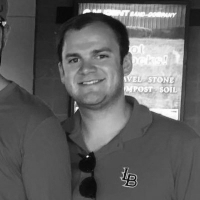Keider Montero is Showing Flashes of Potential in the Detroit Tigers Rotation
The Detroit Tigers could have a nice long-term project in Keider Montero, who is showing flashes of a quality big league starting pitcher.

Coming into the season and throughout spring training the watercooler discussion was about the last spot in the rotation. Skubal was the Ace, Flaherty and Maeda were the veterans, Olson was the surprise from the year prior, and Matt Manning and Casey Mize were battling for the fifth spot.
Too many starters is always a good problem to have. Fast forward to July and Manning has fallen out of favor, Maeda looks like a shell of himself, and Mize is on the shelf due to injury. Injury often leads to opportunity and Keider Montero is making the most of his.
Added to the 40-man roster in December, Montero, a 24-year-old rookie from Venezuela, was in line for a call up if needed in 2024. Watching him in the minors you can see why his name came with plenty of intrigue. A fastball that sits 95 mph, slider, change up, and a big breaking knuckle curveball. The type of stuff that will pop up on Pitching Ninja’s twitter account.
Like so many young pitchers, Montero has the stuff to be a big league league arm, but his command has held him back. In Triple-A Toledo, Montero struck out 54, while also walking 30 in just over 48 innings. With an ERA over five, his first promotion had to do more with convenience over a 40-man spot and double header, but now he’s showing enough to stay.
First Two Appearances
Montero’s first start was game two of a double header against Paul Skenes and the Pirates. He surrendered two home runs, both off pitches in the top of the zone. One, an elevated fastball to McCutchen, tip your cap. The second was Nick Gonzales on a breaking ball high in the zone – the same way he struck out Gonzales earlier in the game.
Maybe that’s just a coincidence, or maybe that is a learning experience.
His next appearance, after an opener against the Phillies, was a bit of a welcome to the majors moment. Even pitches on the edge of the zone turned into hits. Three walks, five runs, but 18 swing and misses. Montero struggled with command at times and saw how small the margins are in the majors. A walk then a meatball to Marsh for a two-run shot. Strikes out Bryce Harper, Alec Bohm flyout, then three-straight hits.
The takeaways, for me at least, were still relatively positive. Concerns, yes, but flashes of what it takes to become an above-average starter. Montero showed he has the stuff to generate swing and miss at the major league level. Now, that’s just step one, but an important step. He also showed his command still needs some work.
Last Two Starts
After the start against the Phillies, Montero was sent back to Triple- A Toledo for a short stint before a Casey Mize injury landed Montero back in Detroit. After his first two appearances lasted just over four innings, Montero really caught some eyes going 6 1/3 innings against the Twins while only allowing two runs. One of those runs?
A fastball that landed in the middle of the zone before landing in the stands out in left.
Even if you were casually watching the game, you noticed something different. Montero looked much more confident in his pitches and was landing first-pitch strikes, getting ahead in counts and allowing his slider to put batters away.
Another interesting takeaway from his start against the Twins was highlighted but my friend, and baseball data wizard, Jerry Mackinem of Tigers Minor League Report. I highly suggest checking out this piece which highlights a change in release point leading to added extension which can help Montero’s fastball play up.
Of course I was watching his last start (7/8 against the Guardians) very closely, and I am glad I was. Six and a third of three hit, no-run, baseball. Montero’s command was the best I have seen in his short time in Detroit. Again, Montero was able to throw first-pitch strikes and work ahead. I know it’s simple, but doing so makes a big difference.
I thought Montero’s fastballs at the top of the zone were more effective in this start. Like you see in the video above, locating his fastball just outside the top of the zone, but enough to look like a strike, helps change the batters eye level and makes his breaking ball more lethal.

In his two best starts, you can see a difference in fastball location at the top of the zone. Sure, he left a couple in a more hittable area, but significantly more on the edge or in a safer area.
Working his knuckle curve and changeup to lefties is going to be much easier if they can’t just wait on a juicy fastball. Montero’s slider is probably his best pitch to righties and will generate more swing and miss the better his fastball is located.
Conclusion
We have seen this coaching staff work wonders on a number of arms. Reese Olson came up last season with middling numbers and flipped a switch once he joined the Tigers rotation full time.
Sure, a similar outcome could happen for Montero, and I am as excited as anyone else, but there will be growing pains, of course.
Anyone who watched Montero through his minor league career knows when he’s on, it’s pretty. But when he’s off, he’s not very effective. Now it’s just about finding the ways to build consistency. Perhaps what we are seeing is the benefit of working with the Tigers coaches and he’ll continue to improve and grow as the season goes on.
No matter how the Tigers season goes the rest of the way, tracking Montero, his changes, and his progress is going to be fun.

